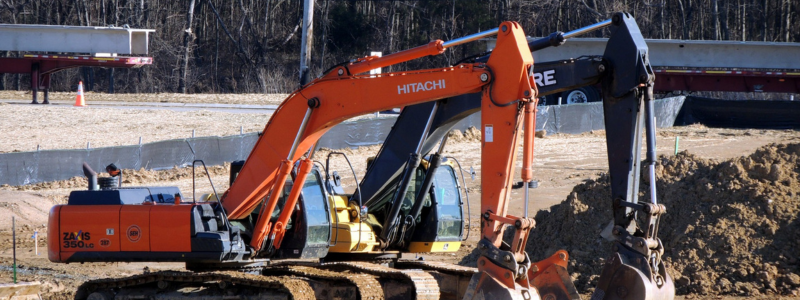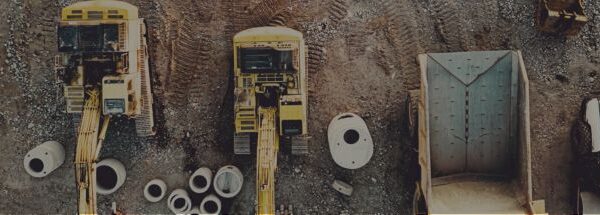
Trust, Compliance, and Risk in External Rentals
For construction companies looking to generate more value from their owned equipment, external rentals present a powerful opportunity. But the shift doesn’t come without hesitation, and that hesitation is valid.
This isn’t about whether external rentals can generate revenue. It’s about whether your organization can protect itself while doing so. Here’s what leaders need to consider before moving forward.
The Right First Question: Can We Trust External Renters?
For most companies, the primary concern is simple:
“How do we protect ourselves when someone outside our organization is using our equipment?”
This is a high-stakes question. Construction fleets are made up of expensive, hard-working, often hard-to-replace assets. The idea of turning those over to a third party, even a trusted subcontractor, raises concerns around misuse, damage, loss, and liability.
But the companies that are succeeding with external rentals aren’t skipping past this concern, they’re addressing it head-on with clear policies, protections, and processes.
Start with Relationships You Already Trust
External rentals don’t have to mean opening your fleet to the public. Most organizations start with a small group of known partners, subcontractors already working on their jobs, companies within a shared ownership group, or recurring collaborators in a Joint Venture.
This isn’t about renting to strangers. It’s about formalizing equipment sharing between parties who already have a working relationship, but doing it on your terms, with the right guardrails in place.
Define Your Compliance and Insurance Requirements
Before any equipment leaves your yard, your company needs a process in place for documentation, risk management, and enforceable terms. This includes:
- Verifying insurance coverage
- Requiring signed rental agreements
- Outlining liability and usage expectations
- Applying deposits or credit holds as needed
Think of it this way: if a third-party rental vendor would require it from you, you should require it from your external rental customers. These are standard practices that protect your business and provide clarity if issues arise.
Visibility and Accountability Don’t Stop at the Gate
Another major concern is what happens once the equipment is off-site. Without oversight, there’s potential for disputes over usage, damage, or responsibility.
This is why field accountability matters. Successful programs put tools in place that allow your team to:
- Capture condition photos before and after use
- Record digital signatures at delivery and return
- Track GPS or meter readings
- Automatically log and bill for damage
This isn’t about surveillance, it’s about documentation and clarity, ensuring that your assets are returned in the expected condition and that any exceptions are backed by data.
Disconnected Systems = Increased Risk
Even with the right policies and tools, everything can fall apart if the process is fragmented. If you’re managing rentals through email threads, spreadsheets, and paper contracts, you’re introducing unnecessary risk.
Successful external rental programs are managed through a centralized system that:
- Houses all documentation
- Connects contract, delivery, and billing workflows
- Tracks customer approvals and insurance
- Makes the process repeatable and auditable
And that’s where most equipment systems fall short, they were built for internal logistics, not to handle third-party rentals with the same level of control.
The Only Solution That Covers Both Worlds
What sets RentalResult apart is that it was built to manage both internal and external rentals, in one system.
Whether you’re assigning equipment to internal jobs or renting it to outside contractors, RentalResult keeps everything in sync: contracts, compliance, logistics, billing, and audit trails. You don’t need two workflows or two systems, just one platform that understands the complexity of construction fleet operations at scale.
That’s why companies like Messer Construction, McGough Construction, and BAM Site Solutions are using RentalResult not only to improve how they manage equipment internally, but to generate recurring revenue from the assets they already own.
Start Small, But Start With Structure
You don’t need to overhaul your entire fleet overnight. Most companies begin with a low-risk pilot: a few underused assets, a short list of approved partners, and a clearly defined process.
But even a pilot needs structure. Without it, you’re testing a risky idea instead of evaluating a business model. The companies succeeding in this space didn’t luck into it, they built a framework for trust, compliance, and profitability, and layered it into their existing operations.
It’s Not About Taking Risks — It’s About Managing Them
The potential of external rentals is real, not just for increased revenue, but for better asset utilization and smarter capital management. But none of that matters without trust, structure, and control.
If you’re still relying on siloed systems or workarounds, it’s time to ask the question:
Can our current system handle this — or do we need a smarter one that can?
RentalResult is purpose-built to help construction companies turn idle equipment into revenue, without compromising control. Whether you’re evaluating your first rental outside your organization or scaling a full program, we can help you do it right.
Curious How External Rentals Could Fit Into Your Operation? Let’s Talk.
Whether you’re optimizing your internal fleet or exploring new revenue streams, now is the time to evaluate if your current system can support external rentals, or if it’s time for a smarter, more unified solution. Schedule a call with an equipment management expert today to explore how external rentals can become a seamless part of your strategy.


